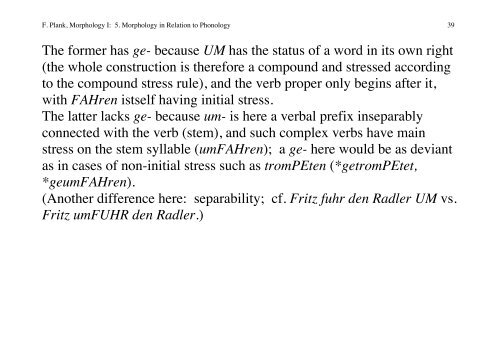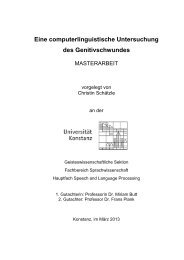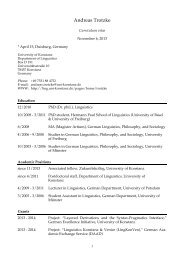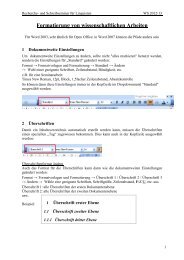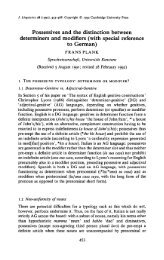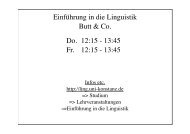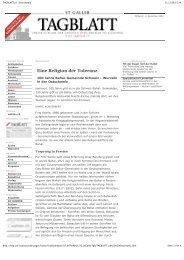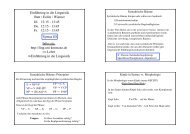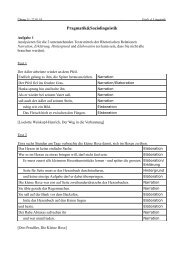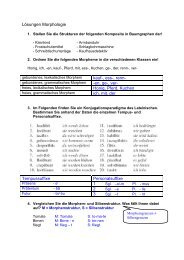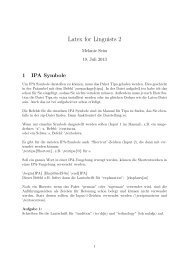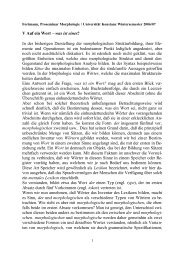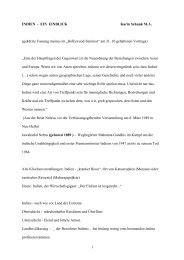5. Morphology in Relation to Phonology
5. Morphology in Relation to Phonology
5. Morphology in Relation to Phonology
You also want an ePaper? Increase the reach of your titles
YUMPU automatically turns print PDFs into web optimized ePapers that Google loves.
F. Plank, <strong>Morphology</strong> I: <strong>5.</strong> <strong>Morphology</strong> <strong>in</strong> <strong>Relation</strong> <strong>to</strong> <strong>Phonology</strong> 39<br />
The former has ge- because UM has the status of a word <strong>in</strong> its own right<br />
(the whole construction is therefore a compound and stressed accord<strong>in</strong>g<br />
<strong>to</strong> the compound stress rule), and the verb proper only beg<strong>in</strong>s after it,<br />
with FAHren istself hav<strong>in</strong>g <strong>in</strong>itial stress.<br />
The latter lacks ge- because um- is here a verbal prefix <strong>in</strong>separably<br />
connected with the verb (stem), and such complex verbs have ma<strong>in</strong><br />
stress on the stem syllable (umFAHren); a ge- here would be as deviant<br />
as <strong>in</strong> cases of non-<strong>in</strong>itial stress such as tromPEten (*getromPEtet,<br />
*geumFAHren).<br />
(Another difference here: separability; cf. Fritz fuhr den Radler UM vs.<br />
Fritz umFUHR den Radler.)


